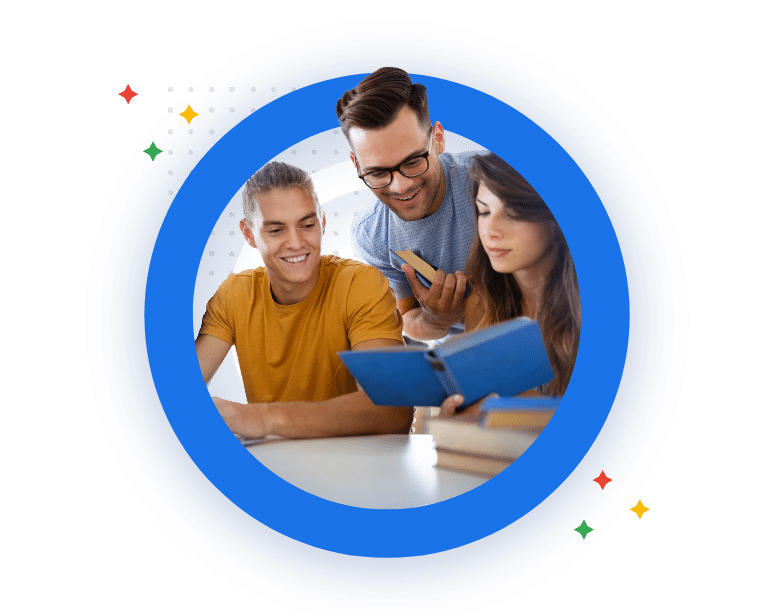

The course Translation & Localization for Digital is the most comprehensive course for localization in Israel, delivered in collaboration with Versio Academy. Combining theory with intensive practice, we aim to train the next generation of localization experts.
In order to reach new markets, the local and international business sector is in need for localization services of the utmost quality. This course dives deep into the methods currently employed by professional localization experts. In addition, it introduces the differences between traditional translation and localization in today’s ecosystem, it maps the common CAT tools that are in use in localization, it reviews the link between localization and technology, and it presents the cloud environment in the context of localization, and much much more.
The course is a perfect match for those who want to be involved in projects that require the expertise of localization, and to translators, writers, and editors who wish to expand their services and offer a wide and current ‘localization toolbox’.
The students will master the skills and tools needed to work in localization, using a variety of CAT tools.
**The studies are recognized by the Israel Translators Association**

This module introduces an overview on localization and its importance, reviews basic concepts in localization, presents the main players, and explains how to work in a localization process.
We’ll learn what is localization and why we need it, what are the main content types in localization, what characterizes the end users and who are the key players in localization, what are the differences between translation and localization, and how does a project in localization look like.
In this module we’ll familiarize with the main types of contents in localization and learn to identify each type’s audience and translation practices.
- Introduction to content types
- Marketing content
- UI content
- Help content
- Legal content
- Additional content types
This module focuses on the linguistic aspects of localization and reviews common translation errors. We’ll elaborate on textual fluency and readability, and learn all about Microcopy, one of the main aspects in the User eXperience.
- Introduction, resources and tools
- Hebrew grammar
- Common mistakes in translation
- Readability & fluency
- The gender neutrality challenge
- Microcopy and User eXperience
- Machine Translation Post Editing (MTPE)
- Practical tools and resources

This module explains what ‘legal translation’ means in the context of the digital world. We’ll review common legal documents such as Terms of Use, Privacy Policy, End-User Agreements, and more. The module aims to allow the students to translate basic legal contracts with no legal knowledge.

Computer-Assisted Translation (CAT) tools are in common use in localization. This module introduces various aspects of the computerized localization environment, and explains the advantages of using CAT tools and why they are so crucial in localization.
- Introduction to localization
- Introduction to CAT tools
- CAT tools in the cloud
- Introduction to MemoQ
- Terminology 101
- Tags in CAT tools
- Translation quality and QA
- Practical toolbox

Computer-Assisted Translation (CAT) tools are in common use in localization. This module introduces CAT tools, their advantages to translators, the basic functionality of CAT tools, and the various types thereof.

In this module we’ll learn all about MemoQ, a leading CAT tool in localization. We’ll learn about the work processes, the advantages of using CAT tools, their key functionalities, and all basic concepts. This module puts emphasis on the practical learning in order to foster an understanding of how to use CAT tools.
- The computerized translation environment
- Functionalities and advantages of using CAT tools
- Review of the similarities of different CAT tools
- Working with MemoQ
- Translation memory (TM) and termbase (TB)
- Tags and placeholders
- Basic familiarity with technical formats
- Advanced settings
- Work processes with CAT tools as freelancers and employees
- Weighted word count and pricing
More and more companies use the technology of automated machine translation, and this module introduces the most common approaches of machine translation post-editing (MLPE).
The students will learn the two practices of machine translation editing – light post-editing (LPE) and full post-editing (FPE).
This module elaborates on translation quality and QA in translation. It introduces the importance of the measurement module of translation quality and explains how global companies employ such model.
We’ll learn about translation quality, the various parameters that influence the quality of translation, the QA processes, embedding of the QA process in CAT tools, the TAUS Model, various error categories, and QA on the client side (LQA).

This module equips the participants with a toolbox for working with translation companies and end clients in localization projects. The participants will learn how to use practical tools and what are the best practices for pricing localization projects.

This module equips the students with a toolbox for working with translation companies and end clients in localization projects. The students will learn how to use practical tools and what are the best practices for pricing localization projects.

This module equips the students with practical tools for working in localization. It includes tips and practical tools such as dictionaries, software, useful websites, productivity apps, common translation portals, translation-dedicated groups in social media, and more.

